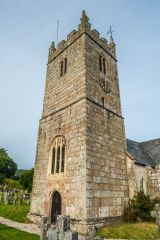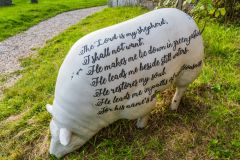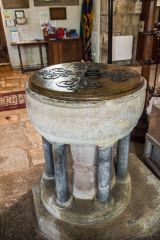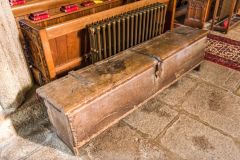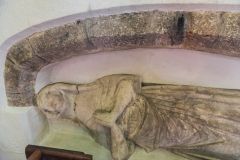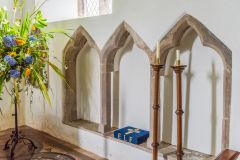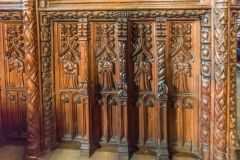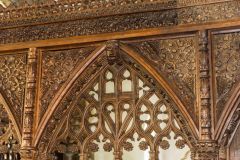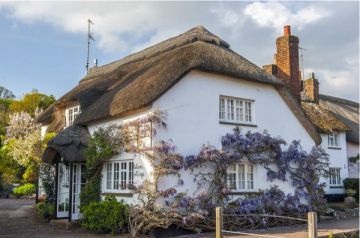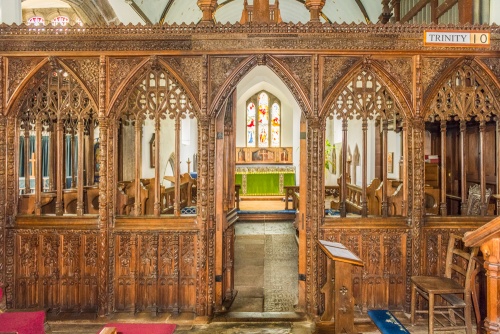
Lustleigh is known as the 'prettiest village in Dartmoor'. Across from the village green and thatched tearoom stands the medieval parish church of St John the Baptist.
Though the earliest part of the present church dates to the 13th century there is every reason to believe that there was a church here before the Norman Conquest. The raised churchyard is roughly oval, an indication of a 5th or 6th-century Christian graveyard, possible on the site of an even earlier pagan burial site.
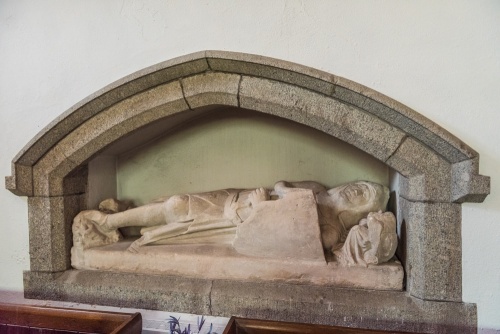
Datuidoc's Stone
Another indication of very early origins is a carved stone, known as the Datuidoc Stone, which stands upright at the west end of the north aisle. This stone bears an inscription reading 'Datuidoe Continoc filius', meaning 'the stone of Datuidoc the son of Continoc'.
The stone is thought to have been a Pre-Christian (or perhaps very early Christian) grave marker erected sometime between AD 550-620. Another theory places it much earlier, in the Roman period. Either way, it is an indication that Lustleigh has been a religious site for well over 1500 years.
The chancel is the oldest part of the present church. It was built in the 13th century and features a triple sedilia (clergy seat) and a double piscina in the south wall and a niche thought to have been used as an Easter Sepulchre in the north wall. Above the communion rails are a pair of pierced corbels used to hang a Lenten veil in front of the altar.
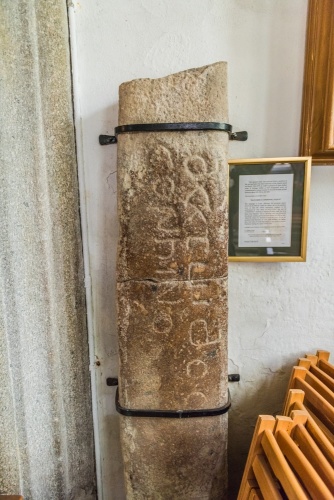
Look up when you enter the church and you see that the barrel roof - typical of Devon - has beautifully carved bosses. The bosses include the instruments of the Passion, fleur-de-lys, and roses.
At the west end of the church is a simple Norman font decorated with cable moulding, reused as the central pillar of a new font with marble pillars.
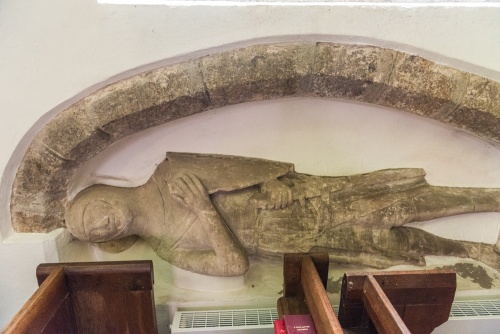
The Tudor Chancel Screen
One of the very best features is an ornately carved chancel screen, erected during the reign of Mary I (1553-58). The screen is decorated with small heads amid vines and flowers. Grotesque figures face the nave, while figures of saints face the chancel and altar. Look for carvings of pomegranates, the symbol of Mary I's mother Catherine of Aragon.
The north aisle dates to the 15th century but it contains a pair of 13th-century effigies depicting a knight and his lady. Both figures are curiously shown on their side, facing into the aisle. One of the north aisle windows contains fragments of 13th-century glass, including the figures of St Boniface, St Catherine, St Margaret of Antioch, and the Virgin and Child. At the east end of the north aisle is the Lady Chapel, which boasts a number of 15th-century floor tiles.
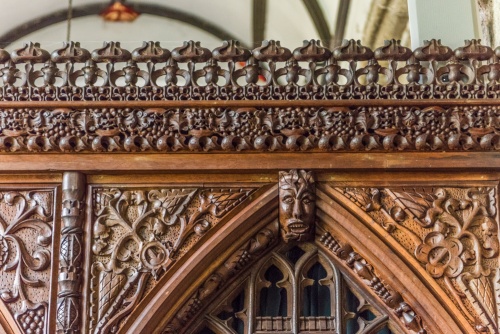
The south transept served as the mortuary chapel for the Lords of the Manor of Lustleigh. In a recess in the south wall is an effigy of a knight thought to be Sir William le Prouz, who died in 1326.
In the churchyard is a small granite building erected in 1825 to serve as a village school. The school was endowed by Rev William Davy, the curate of Lustleigh and remained in use until a new school was built in the late 19th century. It now stores local heritage archived which are open to the public on specified days.
St John's is a lovely church, well worth a visit - and the same can be said for Lustleigh itself, which deserves its reputation as a quintessential English village.
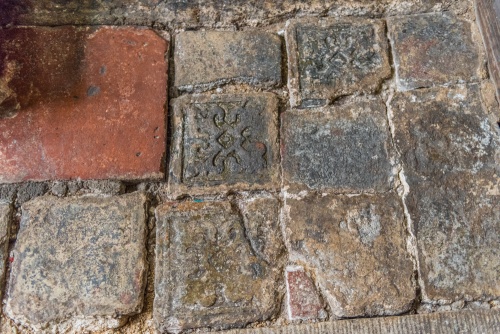
Getting There
The best way to reach Lustleigh is to take the road off the A382 between Moretonhampstead and Bovey Tracey. There is no dedicated parking but you can usually find a place to park on the roadside. St John's Church is usually open daylight hours and was open when we visited.
About Lustleigh, St John's Church
Address: Lustleigh,
Dartmoor,
Devon,
England, TQ13 9TA
Attraction Type: Historic Church
Location: In the centre of Lustleigh village, reached by a minor road of the A382 between Bovey Tracey and Moretonhampstead. Roadside parking.
Website: Lustleigh, St John's Church
Location
map
OS: SX785812
Photo Credit: David Ross and Britain Express
HERITAGE
 We've 'tagged' this attraction information to help you find related historic attractions and learn more about major time periods mentioned.
We've 'tagged' this attraction information to help you find related historic attractions and learn more about major time periods mentioned.
Find other attractions tagged with:
NEARBY HISTORIC ATTRACTIONS
Heritage Rated from 1- 5 (low to exceptional) on historic interest
Parke - 1.8 miles (Countryside) ![]()
Manaton, St Winifred's Church - 2.2 miles (Historic Church) ![]()
Bovey Tracey Church - 2.8 miles (Historic Church) ![]()
Hound Tor Deserted Medieval Village - 2.9 miles (Historic Building) ![]()
Canonteign Falls - 3.1 miles (Countryside) ![]()
Moretonhampstead, St Andrew's Church - 3.5 miles (Historic Church) ![]()
Widecombe-in-the-Moor, St Pancras Church - 5 miles (Historic Church) ![]()
Church House - 5 miles (Historic Building) ![]()
Nearest Holiday Cottages to Lustleigh, St John's Church:
More self catering near Lustleigh, St John's Church
